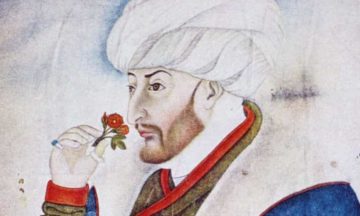Ian Black in The Guardian:
 In May 1453, Ottoman military forces under Sultan Mehmed II captured the once great Byzantine capital of Constantinople, now Istanbul. It was a landmark moment. What was viewed as one of the greatest cities of Christendom, and described by the sultan as “the second Rome”, had fallen to Muslim conquerors. The sultan even called himself “caesar”.
In May 1453, Ottoman military forces under Sultan Mehmed II captured the once great Byzantine capital of Constantinople, now Istanbul. It was a landmark moment. What was viewed as one of the greatest cities of Christendom, and described by the sultan as “the second Rome”, had fallen to Muslim conquerors. The sultan even called himself “caesar”.
After a lengthy siege, Mehmed rode his white horse to Hagia Sophia, the sixth-century Greek Orthodox Church of Divine Wisdom, at the time the largest building in the world. He ordered a single minaret to be added, turning it into a mosque, but refrained from remaking Constantinople as a purely Muslim city. Instead, he promoted the Sunni-dominated tolerance and diversity the Ottomans had been practising for more than a century in south-eastern Europe – long before European Christian societies tolerated their religious minorities. The new Ottoman ruling class was composed mostly of converted Christians.
Marc David Baer’s core argument in this highly readable book is that more than 600 years of the Ottoman empire should be seen as an inseparable part of the history of Europe, and not as something detached from it, as with false narratives that paint the east and west, and Christianity and Islam, as antithetical. Traditional European accounts of Ottoman rule tend to emphasise religion rather than secular matters in line with the significance attached to the Renaissance, the Reformation and the Enlightenment. But, as the author contends, “their story is the unacknowledged part of the story the West tells about itself.”
More here.
